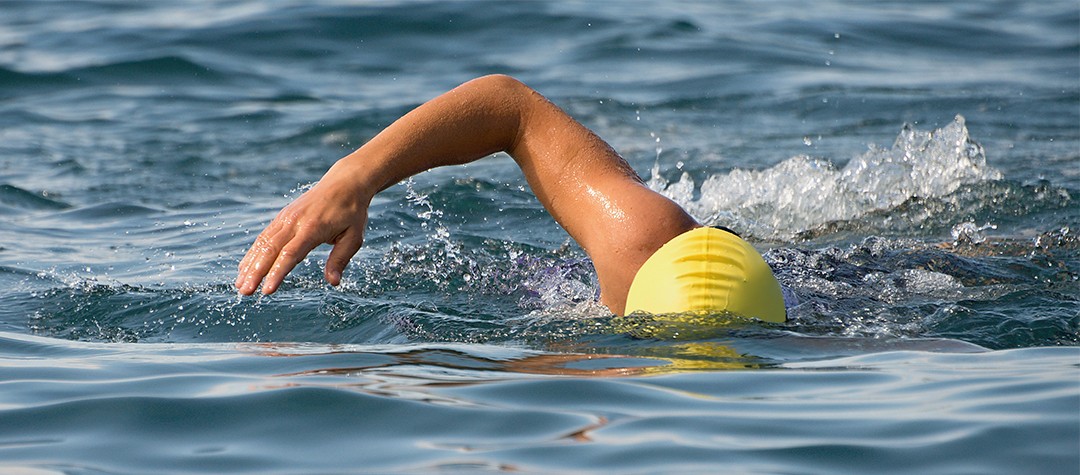Sighting is of course a necessary swimming skill to see where you are going, which is particularly important in open water or long distances. It requires the head to be high enough to clear the eyes in order to be effective.
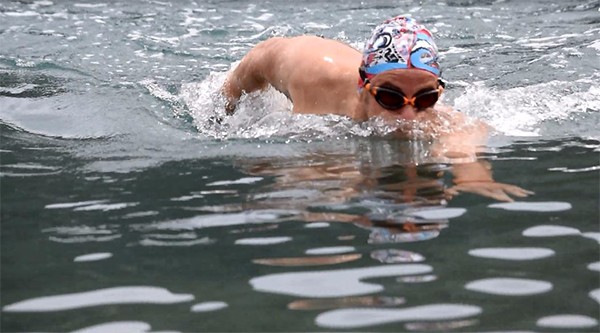
The issue is by lifting the head, (which is the heaviest part of the body) this can come at a price. This includes:
- Legs dropping
- An inefficient body position
- Strain on your neck and shoulders
- Slowing down
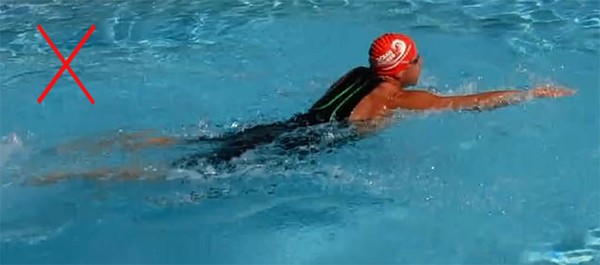
So how do you avoid these potential issues? The Ocean Walker Technique is about efficiency and relieving stress off the body. So devising a way to sight, keeping the momentum and glide of the stroke whilst not causing any strain on the body was essential.
The issue with the way I used to sight was I used to lift my head to clear the water and my front arm would almost systematically drop at the same time. This resulted in my body immediately being dragged back down in the process, giving me limited time to sight. I also used to breathe at the same time as sighting which meant it required me to lift my head even higher than just clearing the eyes, as I had to also clear my mouth.
Sighting the Ocean Walker Way
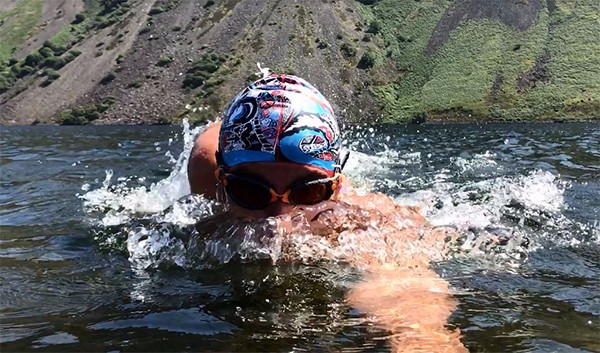
In order to keep the momentum and glide going that each rotation creates in the Ocean Walker Technique, the foot drives the hip around followed by a pull once the hip drops underneath and you are on your side. It’s necessary to hold the extended arm under water in front of you, in line with your shoulder (not across the eye line) whilst sighting otherwise the momentum will be lost when the pull is initiated.
The pull is slightly deeper and rather than lifting the head up independently, the pull lifts the body up and the head this way creating no strain on the neck and shoulders. The elevation is enough to clear the water with the eyes only. I also sight on my side to minimise drag and maximise efficiency with legs together. Hold position to maximise the glide and benefit from the momentum you have created.
There are a number three key elements in order to achieve perfect sighting:
- Still Head
- Balance
- Stability
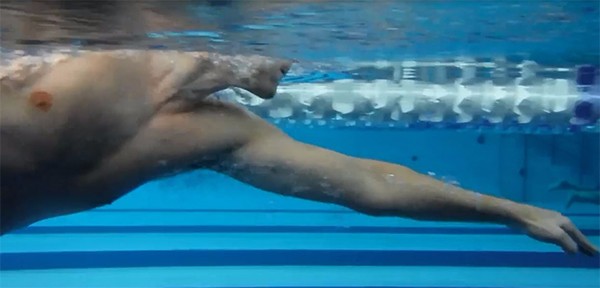
Sighting Training Tips
This can be done in the pool, breathing every two strokes followed by sighting every two strokes trying to stay on the black line throughout. Relax your front arm under the water when sighting. Put a drinks bottle at the end of the pool to focus on every time you sight. When this is mastered and you are used to sighting regularly, try and extend the amount of strokes in between, starting with six, then 10 strokes etc.
Once you’ve mastered the pool sighting, you can extend the distance by practising in open water. (Of course you need to have open water swimming experience to do this). Choose a landmark like a building in the distance, tree or better still a buoy.
Keep a still head when your head is down swimming, taking your breath separately to the sight. It is easier in a lake where there are no waves and building up to practising in the sea. If your head is at an angle under water from a tight neck or imbalance, then it is likely you will sight at an angle making it difficult to see in front of you.
Try and extend how long each time you sight, 15 strokes, 20 etc. Are you heading in the right direction or not? Remember your head is your rudder, you will go where your head does, so if you’re going off course it could be as a result of this and an imbalance.
Top 5 Do’s and Dont’s
Do
- Keep your head still prior to sighting
- Hold your front arm in the water in line with the shoulder
- Kick a little harder to send you into the sight
- Pull slightly deeper
- Keep your legs together
Don’t
- Drop front arm when sighting
- Drive arm into the centre line when sighting
- Breathe & sight together
- Lift your head independently without the pull
- Sight more than you have to

